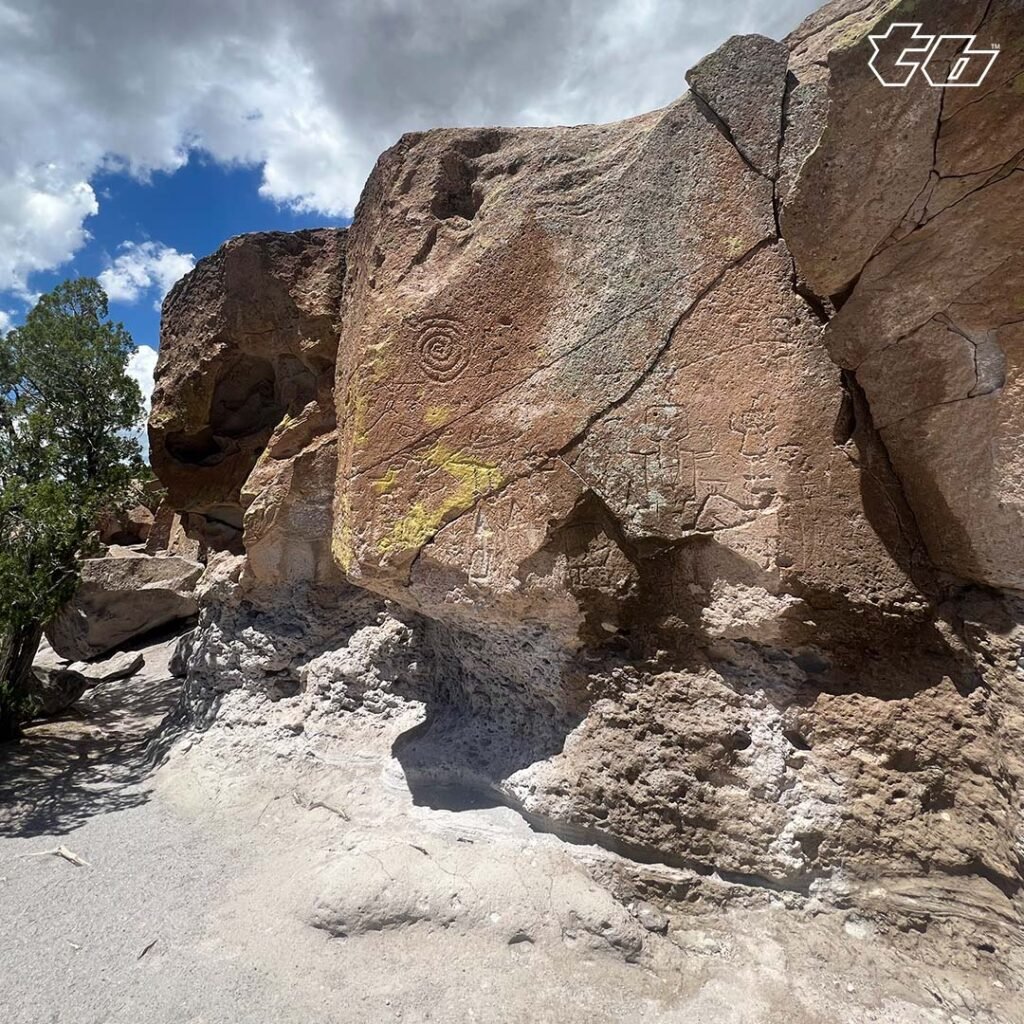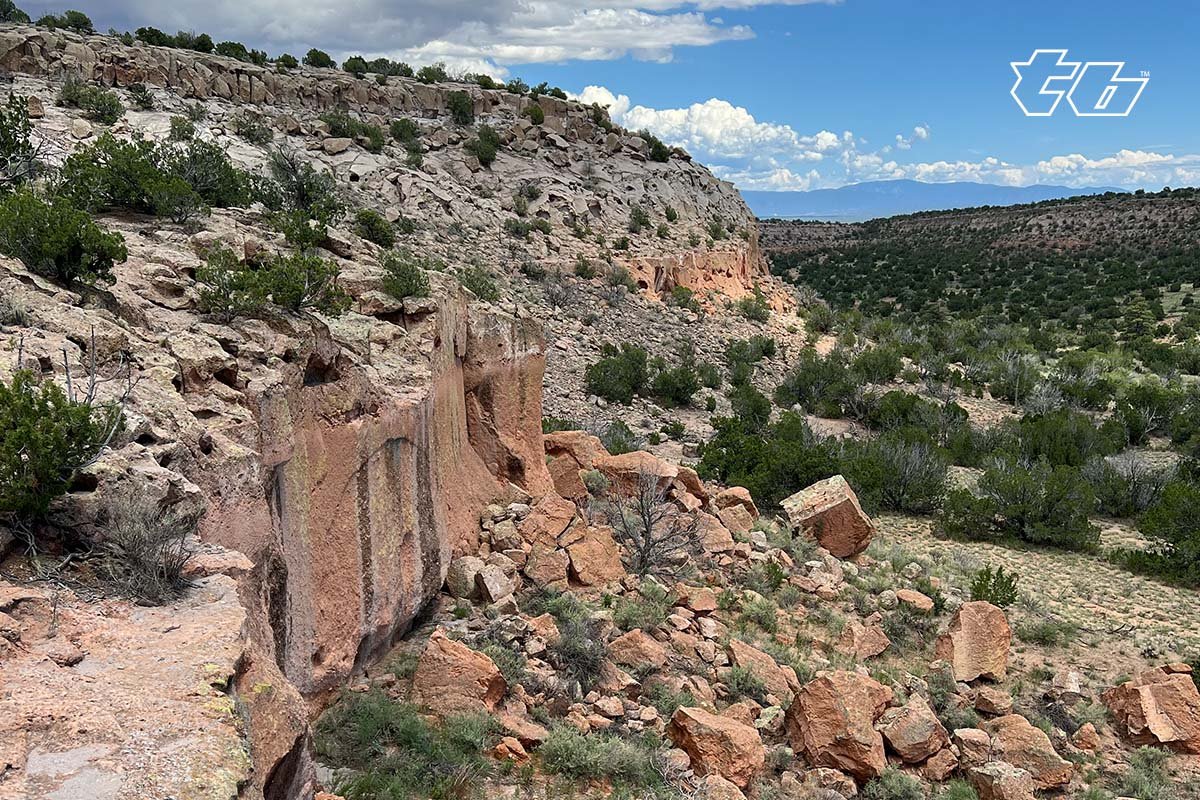Tucked into the rugged expanse of Los Alamos, New Mexico, Tsankawi—part of Bandelier National Monument—offers a profound journey through time. This prehistoric site reveals the story of the Ancestral Pueblo people who thrived here from the 12th to the 16th centuries, set against a dramatic landscape of mesas, canyons, and volcanic tuff. Beyond its ancient ruins, Tsankawi’s sacred significance endures for modern Pueblo communities, while its proximity to the Los Alamos National Laboratory (LANL) adds a layer of modern complexity.

Footsteps in Rock
The landscape of Tsankawi is a testament to both nature’s artistry and human resilience. Trails worn deep into the soft tuff by centuries of footsteps lead visitors past petroglyphs, pottery shards, and breathtaking views of the Jemez Mountains and Rio Grande Valley. This high-desert terrain, with its cavates (cave dwellings) and mesa-top village, provided the Ancestral Puebloans with shelter, resources, and natural defenses. Their primitive homes—cavates carved into cliffs and stone structures atop the mesa—stood for over 400 years, reflecting a sustainable way of life that ended only when drought forced their departure in the 1500s.
Petroglyphs of Faith
For the Ancestral Pueblo people and their descendants, such as the San Ildefonso Pueblo, Tsankawi is sacred ground, rich with spiritual and cultural meaning. The petroglyphs, kivas, and cavates are not mere relics but enduring connections to their heritage, whispering of a civilization that lived in harmony with the land. These sites, used for centuries, were both practical and profound—spaces for daily life and reverence. Today, this sanctity persists, though it’s been tested by modern encroachment, most notably the establishment of LANL nearby, highlighting the challenge of preserving Indigenous history in a changing world.


From Pueblo to Physics
Tsankawi’s relationship with LANL weaves a striking contrast between ancient serenity and modern innovation. Born during the Manhattan Project in 1943, LANL transformed Los Alamos into a scientific powerhouse, displacing local communities and raising environmental concerns for the Pueblos who hold Tsankawi dear. Yet, there’s a bridge between these worlds: Native Americans from nearby pueblos contributed to LANL’s early workforce, merging their ancestral ties with the lab’s mission. This juxtaposition—of a prehistoric village and a nuclear research hub—makes Tsankawi a unique lens through which to view humanity’s evolution across millennia.
Tsankawi’s Last Whisper
In the end, Tsankawi is a place where past and present collide, inviting reflection on both heritage and progress. Its landscape and primitive homes tell of a resourceful civilization, its sacredness speaks to enduring cultural bonds, and its ties to LANL remind us of the complexities of modernity. Hiking its trails or standing amid its ruins, you feel the weight of history and the pull of the future. Tsankawi in Los Alamos is more than a destination—it’s a timeless story etched in stone, urging us to honor what was while contemplating what will be.




